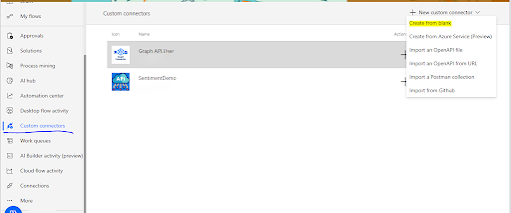Power Automate Desktop: Data Table Explained
PA
Power Automate Desktop - Data Table
Concise reference - what it is, where to use, when to use, limitations
1. What it is
A Data Table is an in-memory tabular structure with named columns and rows, implemented on the .NET DataTable model. Use it to hold structured records inside a flow for manipulation, iteration, and transformation before exporting or persisting.
2. Where you can use it
- Read Excel or CSV data and process rows without opening Excel UI
- Aggregate results from web scraping or API responses into a structured form
- Prepare datasets for export to SharePoint, databases, or files
- Combine multiple sources - append, merge, or join data before output
- Drive decision logic by iterating rows and applying conditional operations
3. When to use it
- When automation must process multiple records in memory during runtime
- When you need temporary structured storage between extraction and output steps
- When you will loop, filter, sort, or transform tabular data programmatically
- When preparing batched writes to Excel, databases, or downstream systems
4. Practical patterns
- Create table with columns then Add Data Row inside a loop to build results
- Use Get Row or For Each Row to iterate and apply business rules or transformations
- Export Data Table to CSV or Excel at end of flow for persistence or reporting
- Use Data Table as an intermediate cache when joining data from multiple sources
5. Limitations
- All contents reside in memory - large tables increase RAM use and slow execution
- No built-in query language - filtering requires loops, conditions, or expression workarounds
- Columns are loosely typed - manual coercion may be required to avoid runtime type issues
- Not persistent - Data Table state is lost when the flow ends unless exported
- Complex nested objects are not supported directly - flatten or serialize before storing
6. Quick best practices
- Limit rows kept in memory - stream to files or databases for very large datasets
- Define column names explicitly to avoid runtime key errors
- Validate and coerce data types as you add rows to prevent downstream failures
- Use descriptive variable names for Data Tables to clarify purpose in complex flows
Power Automate Desktop Data Table Operations
Variables.CreateNewDatatable InputTable: { ^['First Name', 'Middle Name', 'Last Name', 'Address'], [$'''''', $'''''', $'''''', $''''''] } DataTable=> DataTable
Variables.DeleteEmptyRowsFromDataTable DataTable: DataTable
/# It will create empty row to remove it you can add remove empty row or copy that code in notepad
it will look like below
Variables.CreateNewDatatable InputTable: { ^['First Name', 'Middle Name', 'Last Name', 'Address'] } DataTable=> DataTable
============
from here remove that square bracket
Variables.CreateNewDatatable InputTable: { ^['First Name', 'Middle Name', 'Last Name', 'Address'] } DataTable=> DataTable
and paste this in designer
#/
DISABLE Variables.CreateNewDatatable InputTable: { ^['First Name', 'Middle Name', 'Last Name', 'Address'] } DataTable=> DataTable
# insert record
Variables.AddRowToDataTable.AppendRowToDataTable DataTable: DataTable RowToAdd: ['Sun', 'S', 'Shetty', 'Test Address']
Variables.AddRowToDataTable.AppendRowToDataTable DataTable: DataTable RowToAdd: ['Test', '', 'Singh', 'Test Address1']
Variables.AddRowToDataTable.AppendRowToDataTable DataTable: DataTable RowToAdd: ['Test2', 'M', 'Ravat', 'Test Address2']
Variables.AddRowToDataTable.AppendRowToDataTable DataTable: DataTable RowToAdd: ['Test2', 'M', 'Ravat', 'Test Address2']
# update data table item
Variables.ModifyDataTableItem DataTable: DataTable ColumnNameOrIndex: $'''Address''' RowIndex: 0 Value: $'''updated address'''
# Delete duplicate rows
Variables.DeleteDuplicateRowsFromDataTable DataTable: DataTable
# find rows based on search value
Variables.FindOrReplaceInDataTable.FindItemInDataTableEverywhere DataTable: DataTable AllMatches: True ValueToFind: $'''Test''' MatchCase: False MatchEntireCellContents: False DataTableMatches=> DataTableMatches
# find and replace values
Variables.FindOrReplaceInDataTable.ReplaceItemInDataTableEverywhere DataTable: DataTable AllMatches: True ValueToFind: $'''Test''' MatchCase: False MatchEntireCellContents: False TextToReplaceWith: $'''Replaced''' DataTableMatches=> DataTableReplaced
# sort based on column
Variables.SortDataTable.SortWithColumnName DataTable: DataTable ColumnName: $'''First Name''' Order: Variables.SortDirection.Ascending
Variables.AddRowToDataTable.AppendRowToDataTable DataTable: DataTable RowToAdd: ['Test', '', 'Singh', 'Test Address1']
# delete row based on row index
Variables.DeleteRowFromDataTable DataTable: DataTable RowIndex: 3
/# add new column at the end of datatable
and delete it using delete operation#/
Variables.AddColumnToDataTable.AppendColumnToDataTable DataTable: DataTable ColumnName: $'''Test Column'''
Variables.DeleteColumnFromDataTable.DeleteColumnWithName DataTable: DataTable ColumnName: $'''Test Column'''
# filter datatable
Variables.FilterDataTable DataTable: DataTable FilterParameters: { ^['RULE', 'COLUMN', 'OPERATOR', 'VALUE'], [$'''''', $'''First Name''', $'''Contains''', $'''Sun'''] } MatchCase: True FilteredDataTable=> FilteredDataTable
/# merge two datatable
merge mode you can select based on your requirement#/
Variables.MergeDataTables FirstDataTable: DataTable SecondDataTable: FilteredDataTable MergeMode: Variables.MergeMode.AddExtraColumns
# create new data table
Variables.CreateNewDatatable InputTable: { ^['First Name', 'Middle Name', 'Last Name', 'Address', 'PhoneNo', 'PinCode'] } DataTable=> DataTable2
Variables.AddRowToDataTable.AppendRowToDataTable DataTable: DataTable2 RowToAdd: ['akash', '', '', 'test', 9878987656, 768976]
Variables.AddRowToDataTable.AppendRowToDataTable DataTable: DataTable2 RowToAdd: ['Sun', '', '', 'test', 9878982345, 345976]
# join table
Variables.JoinDataTable FirstDataTable: DataTable2 SecondDataTable: DataTable JoinOperation: Variables.JoinOperationType.Inner JoinParameters: { ^['COLUMN 1', 'OPERATOR', 'COLUMN 2'], [$'''First Name''', $'''Equal''', $'''First Name'''] } JoinedDataTable=> JoinedDataTable
# convert datatable to text
Variables.ConvertDataTableToCSV.DataTableToCSVCustomSeparator DataTable: DataTable IncludeColumnNames: True CustomColumnsSeparator: $''',''' CSVText=> CSVText
# convert text to data table
Variables.GenerateDataTableFromCSV.ReadPredefinedSeparator CSVText: CSVText TrimFields: True FirstLineContainsColumnNames: True ReadFieldsAsText: False ColumnsSeparator: Variables.CSVColumnsSeparator.SystemDefault CSVTable=> CSVTable
Copy and paste the above code into your Power Automate Desktop designer to test all variable operations.



Comments
Post a Comment